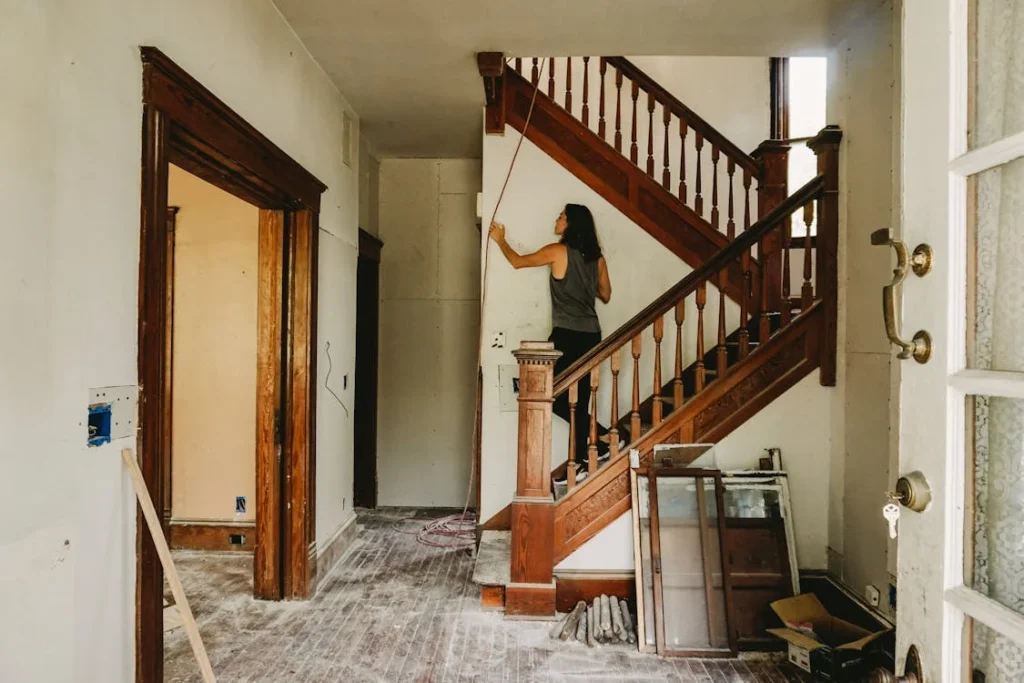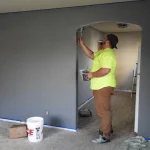Tackling a whole-home renovation is a big commitment. Between permits, budgets, and timelines, it’s easy to feel pulled in every direction. But before you start picking out tile or paint colors, it’s important to focus on what really matters—repairs that affect how your home works.
Many homeowners dive into renovations without a clear order. They replace cabinets before checking plumbing, or they paint walls before fixing drafts. These missteps lead to extra costs and delays. The good news is that with a solid plan, you can avoid these problems and move through your renovation smoothly.
Knowing which repairs to tackle first helps you stay on track. It also gives your project a stronger foundation—literally and financially. Let’s look at how to set the right priorities and why it matters for your home and budget.
Address Structural and Exterior Needs First
In Denver, CO, homes deal with a unique mix of weather. From heavy snow in winter to hail in spring, the elements can cause wear on roofs, siding, and windows over time. That’s why one of the first things to focus on is the structure and exterior of the home.
If the roof is damaged or nearing the end of its life, it’s smart to handle that early. A new kitchen won’t matter much if leaks or drafts damage it later. Roofs that show signs of curling, sagging, or missing shingles may need more than a patch job.
Working with a professional helps you spot issues before they get worse. Sol Vista Roofing is a well-known Denver-based company that offers inspections and repair services for residential properties. They can help assess damage, explain options, and recommend next steps based on your goals.
If you want to learn more or compare services, you can look up Sol Roofing Denver online to find information about their experience, service areas, and client reviews.
Starting with roofing and exterior work helps protect everything else inside your home. It also improves energy efficiency and keeps your investment safe while the rest of the renovation moves forward.
Plan for Electrical, Plumbing, and HVAC Upgrades
Once the outside is in good shape, it’s time to think about what’s behind the walls. Electrical wiring, plumbing lines, and heating and cooling systems are easy to forget—until something breaks. If you’re renovating an older home, these systems might be outdated or out of code.
Fixing them now is easier than waiting. You don’t want to install new drywall or flooring only to open it back up for a wiring issue or a leak. Have an electrician check your panel and outlets. Call a plumber to inspect old pipes. Bring in an HVAC contractor to look at your furnace and ductwork.
Upgrading these systems makes the home safer and more comfortable. It also gives you peace of mind before the next phase of the renovation.
Fix Foundation or Drainage Issues Early
Some of the most serious problems in a home start at the foundation. Cracks, uneven floors, and doors that won’t close properly could point to deeper issues. If left alone, they may lead to structural problems that are harder to fix down the line.
Before you begin any major updates, have a professional check the foundation. If there are concerns, address them first. It’s much easier to fix these problems before adding new flooring, cabinetry, or wall finishes.
Drainage is another area that deserves attention early in a renovation. Poor drainage can lead to water pooling near the home, which may cause mold, wood rot, or foundation damage. Simple changes like grading the soil away from the house or adding downspout extensions can help prevent long-term issues.
Handling foundation and drainage repairs at the start keeps your renovation stable. It also avoids wasting money on interior work that might be affected later.
Update Windows and Insulation for Energy Efficiency
Next, focus on areas that impact energy use and comfort. Old windows and poor insulation can drive up utility costs and make your home feel drafty or inconsistent in temperature.
Replacing windows may be a bigger investment up front, but it adds value over time. Look for double-pane or energy-efficient models that help regulate indoor temperatures and block outside noise.
Insulation is just as important. Adding insulation in attics, crawl spaces, and exterior walls helps maintain a steady temperature inside. It also supports the performance of your HVAC system.
These upgrades are easier to manage while walls and ceilings are already exposed. Once your home is better insulated and sealed, you’ll notice improvements in both comfort and utility bills.
Focus on Kitchens and Bathrooms Next
Once the structure and systems are in good shape, turn your attention to kitchens and bathrooms. These rooms have the biggest impact on how a home feels and functions day to day.
Start with layout and storage. Think about how your family uses the space. If it’s hard to move around or lacks enough cabinets, adjust the design before buying new fixtures or finishes.
Next, update appliances, plumbing fixtures, and lighting. These changes can modernize the space and make it more efficient. Replacing old countertops or adding tile backsplashes also improves appearance without a full remodel.
These updates are some of the most rewarding in a renovation. They increase comfort, function, and resale value.
A whole-home renovation can feel like a lot, but taking the right steps in the right order makes it manageable. Start with structure, move into systems, and then tackle the spaces you use the most. That approach saves time, cuts costs, and gives you better results.
When you prioritize smart repairs early on, the rest of your project comes together more smoothly. Your home becomes safer, more comfortable, and ready to enjoy for years to come.







